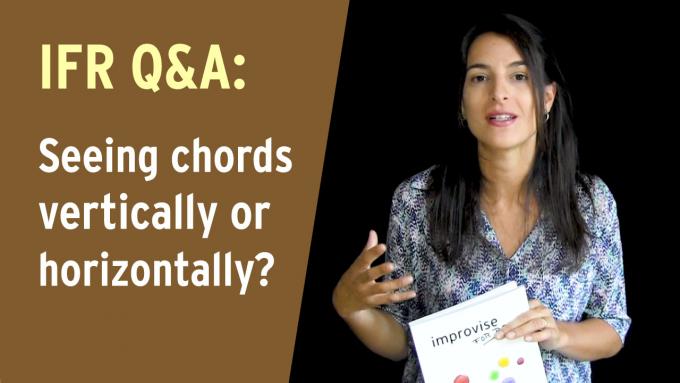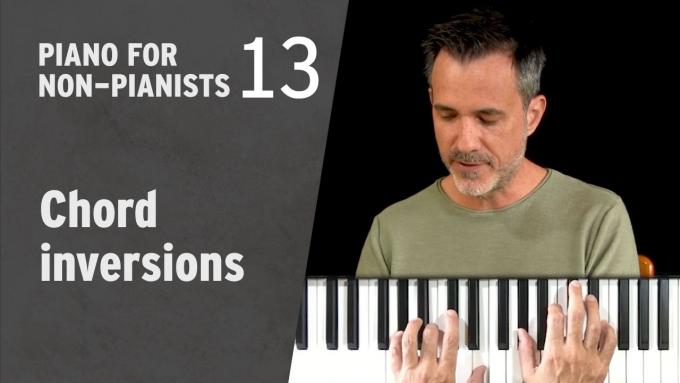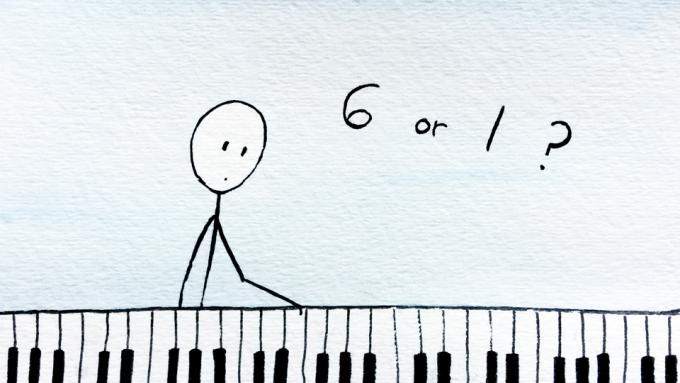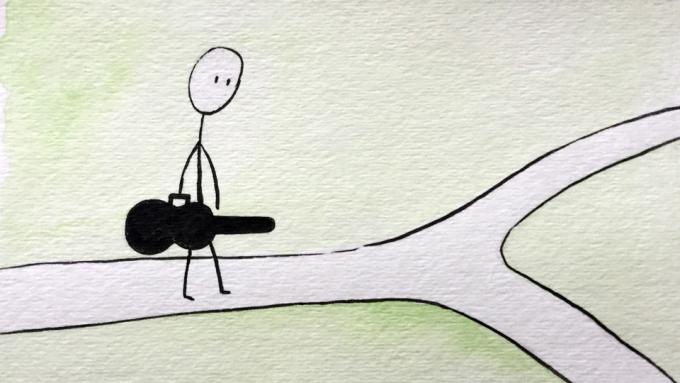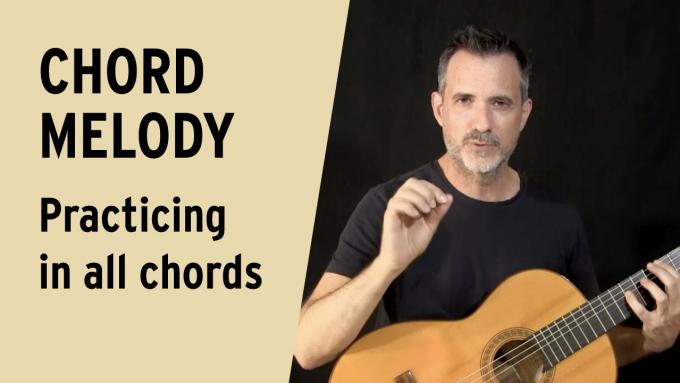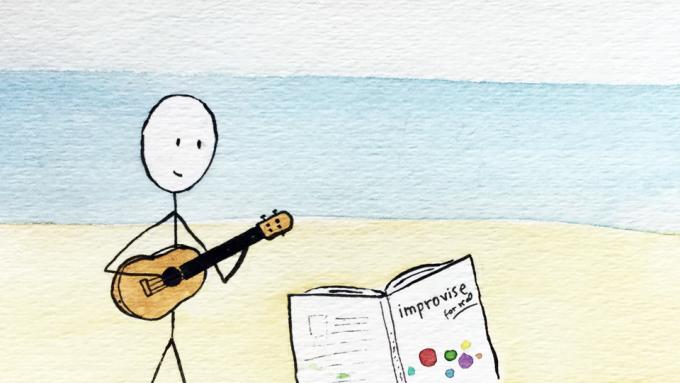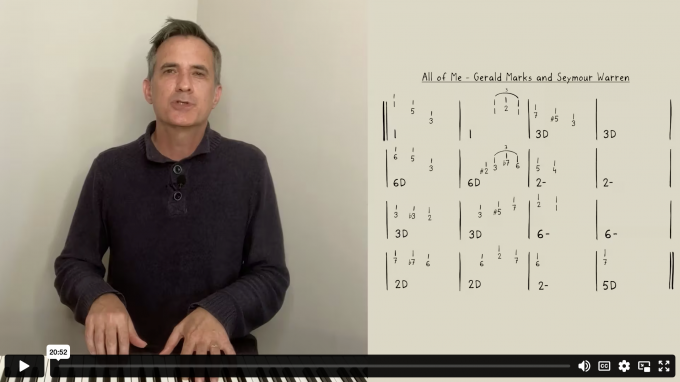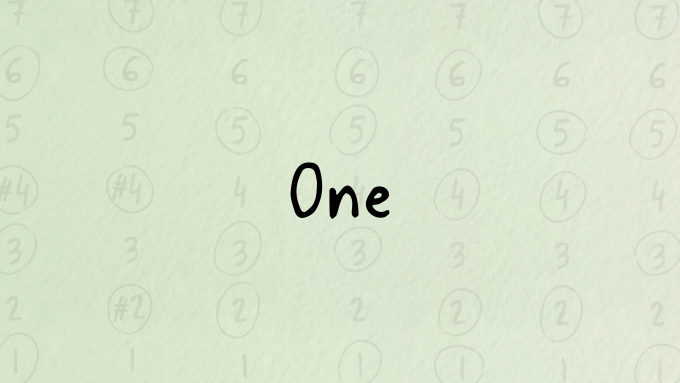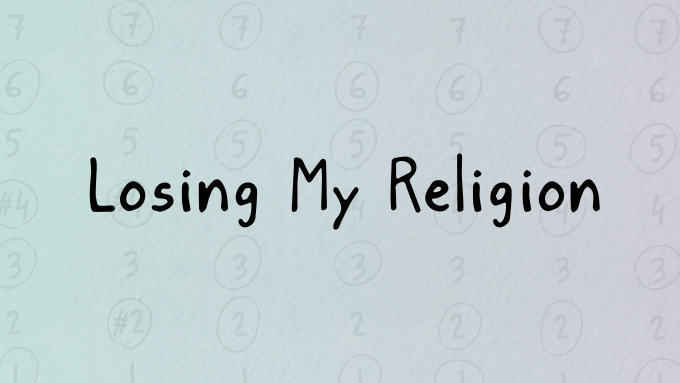A new IFR student asks, "When you improvise over chord progressions, do you think of the chords vertically or horizontally?"
Are you curious about looping? In this video I'll show you how the looper pedal works and how easy it is to create your own loops with what you already know from your IFR practice.
In this lesson you will learn to create chord inversions and I'll show you three fantastic exercises that will train your hands to find these chord shapes quickly on the piano keyboard.
I’m used to calling the root of a minor key “note 1” but I notice you often call it note 6. Why wouldn’t we just call it note 1?
Should I study the most important harmonic environments first? Or is it better to study all seven harmonic environments in order?
In this video I'll show you how to approach your daily chord melody practice so that you can develop the same creative freedom in chord melody style that you have when you are playing single-note melody lines.
Can the IFR method be applied to the ukulele? How can I visualize the map of notes on the fretboard, given that the strings are tuned out of order?
In this free video lesson we will walk through the melody to "All of Me" and discover some of the lessons it can teach us as improvisers about the art of melodic phrasing.
This song uses one of the coolest sounds in modern pop music which is the movement from the 6- chord to the 2D chord.
The melancholy angst captured in this song is a lesson in the incredible diversity of emotions that we can express with just the seven notes of the major scale.
